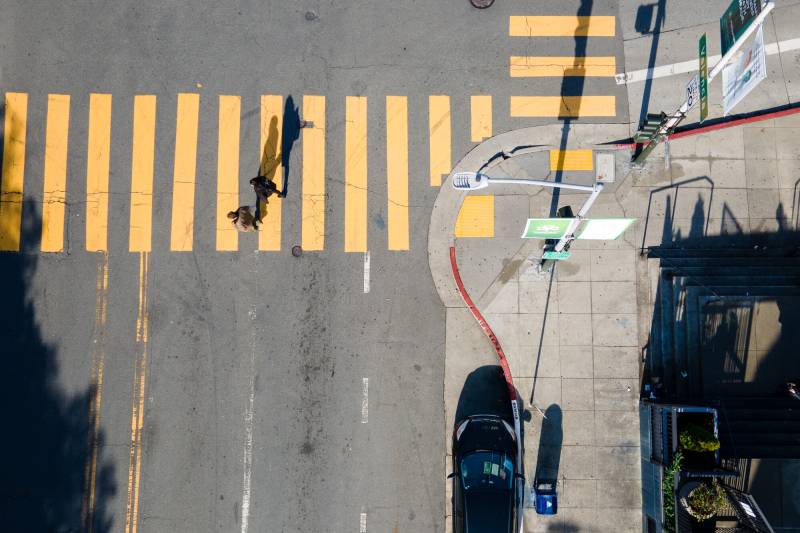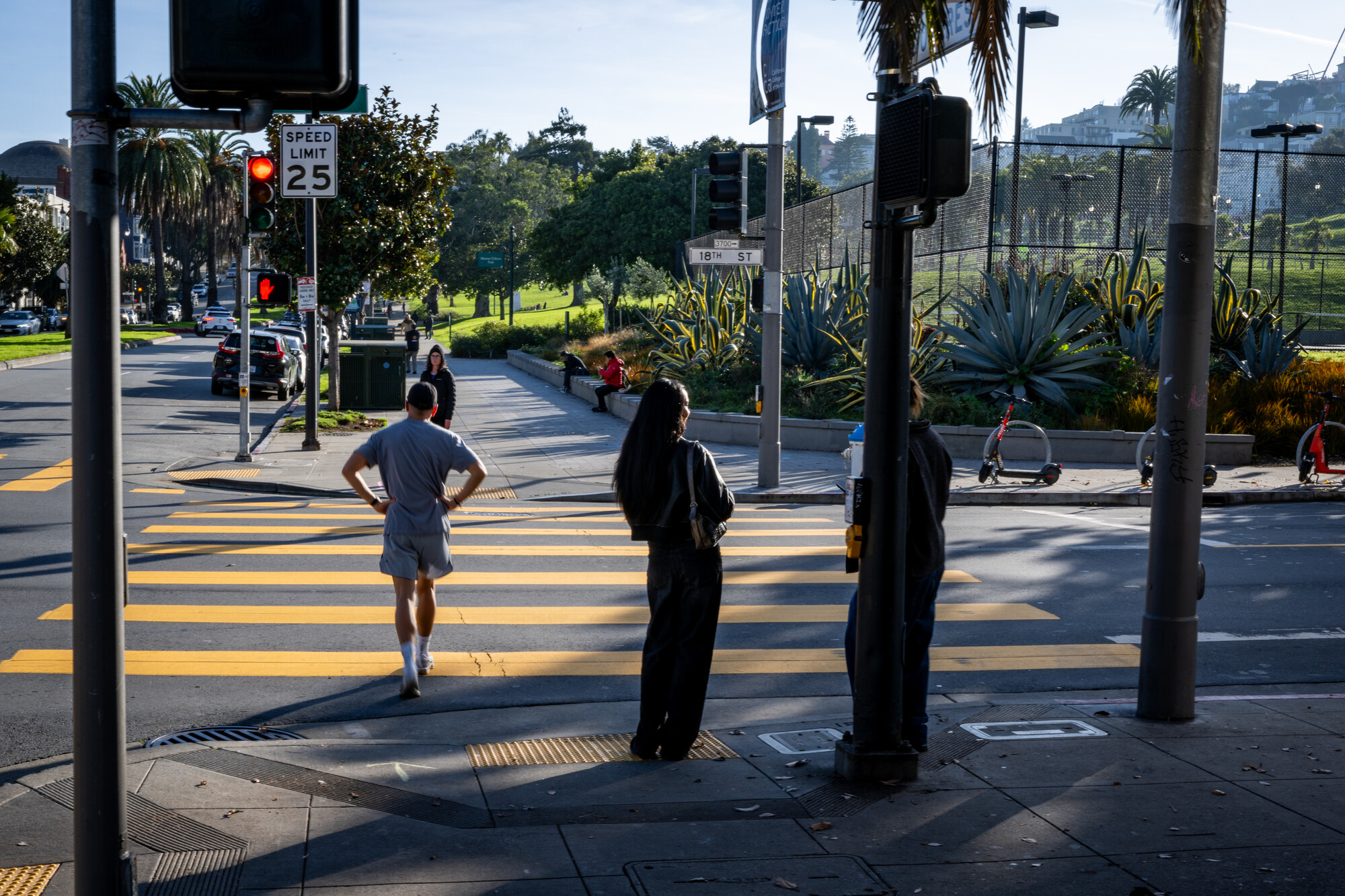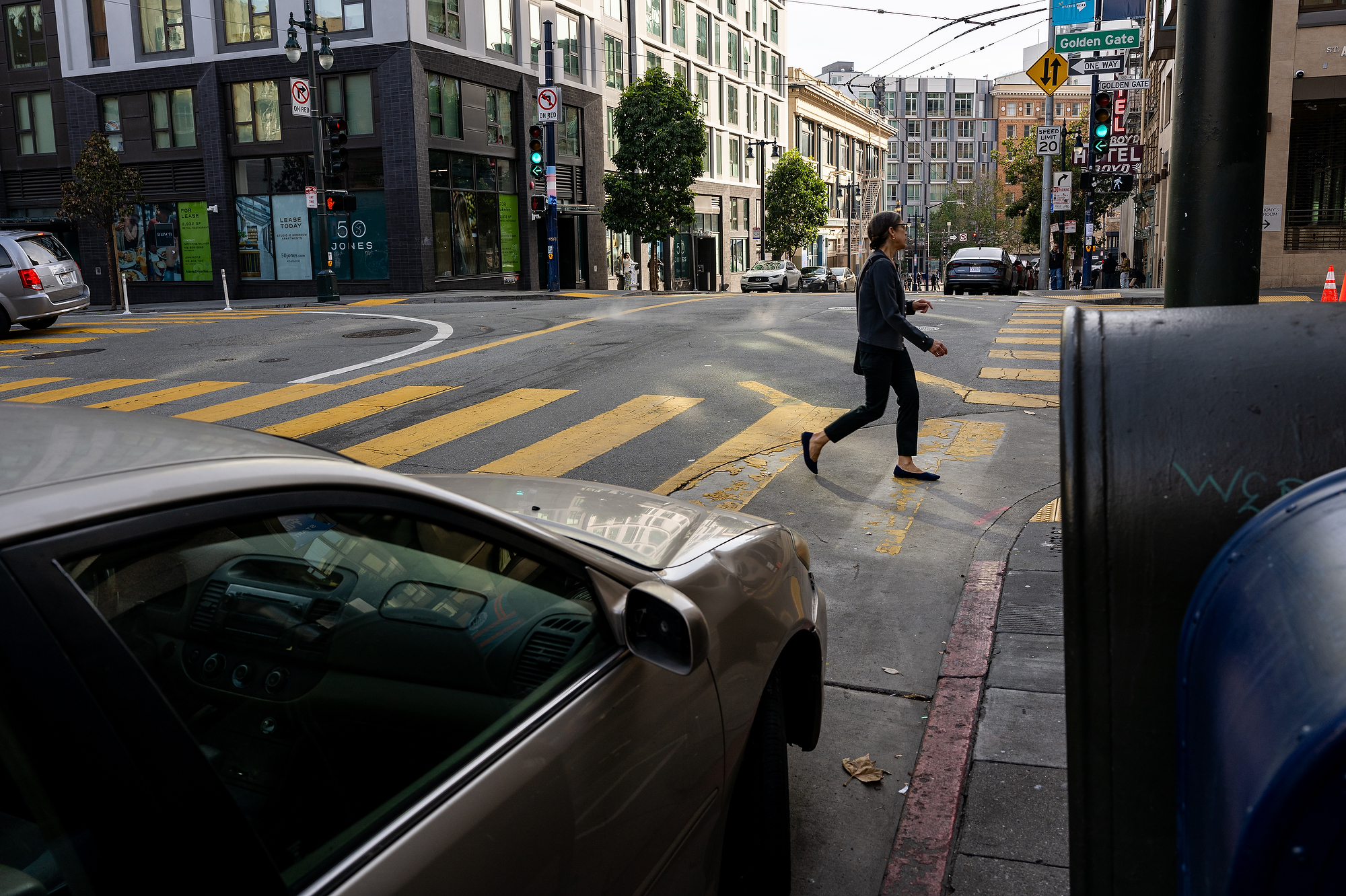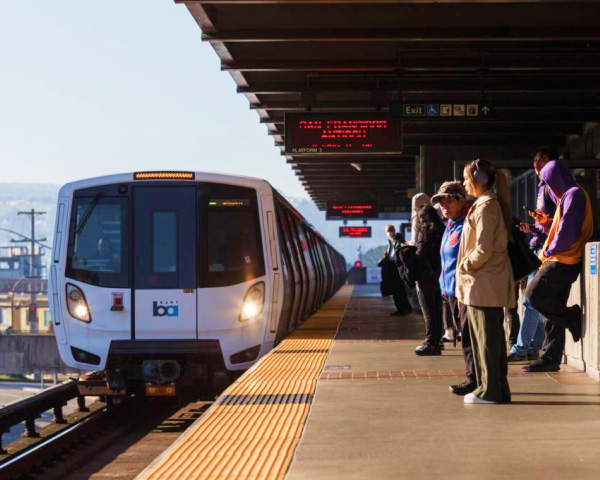In California, a new year brings a raft of new laws. And one of the most talked-about new laws in the state is Assembly Bill 413, which enforces something called “daylighting.”
In a nutshell, daylighting will now make it illegal to park a car within 20 feet of a pedestrian crosswalk. AB 413 has already been in effect for the last year, but the big difference for 2025 is that cities around the Bay Area and California will now start enforcing these new parking orders — complete with hefty fines for drivers.
That said, it turns out there’s actually quite a bit of difference in how that will look, depending on what city you live — or work — in. And the latest update: The San Francisco Municipal Transportation Agency (SFMTA) announced it’s walking back the city’s original plan to enforce daylighting laws starting March 1 with tickets even for drivers who park in unmarked daylighted spots. (Jump to more information about daylighting enforcement in San Francisco.)
Keep reading for everything you need to know about daylighting, from how to make sure you avoid a pricey parking ticket to hopes for pedestrian safety around the region.
Jump straight to:
- Why could I be ticketed even if the curb isn’t painted red?
- How can I avoid getting a citation for daylighting in 2025?
- Is my city enforcing daylighting with tickets?
How does daylighting work if I’m trying to park my car?
Daylighting is the practice of preventing cars from parking near crosswalks in order to make people using crosswalks more visible to drivers — thereby reducing the chance a person gets hit by a car.
California’s daylighting law makes it illegal to “stop, stand or park” a vehicle within 20 feet of any unmarked or marked crosswalk or within 15 feet of any crosswalk where a curb extension is present.
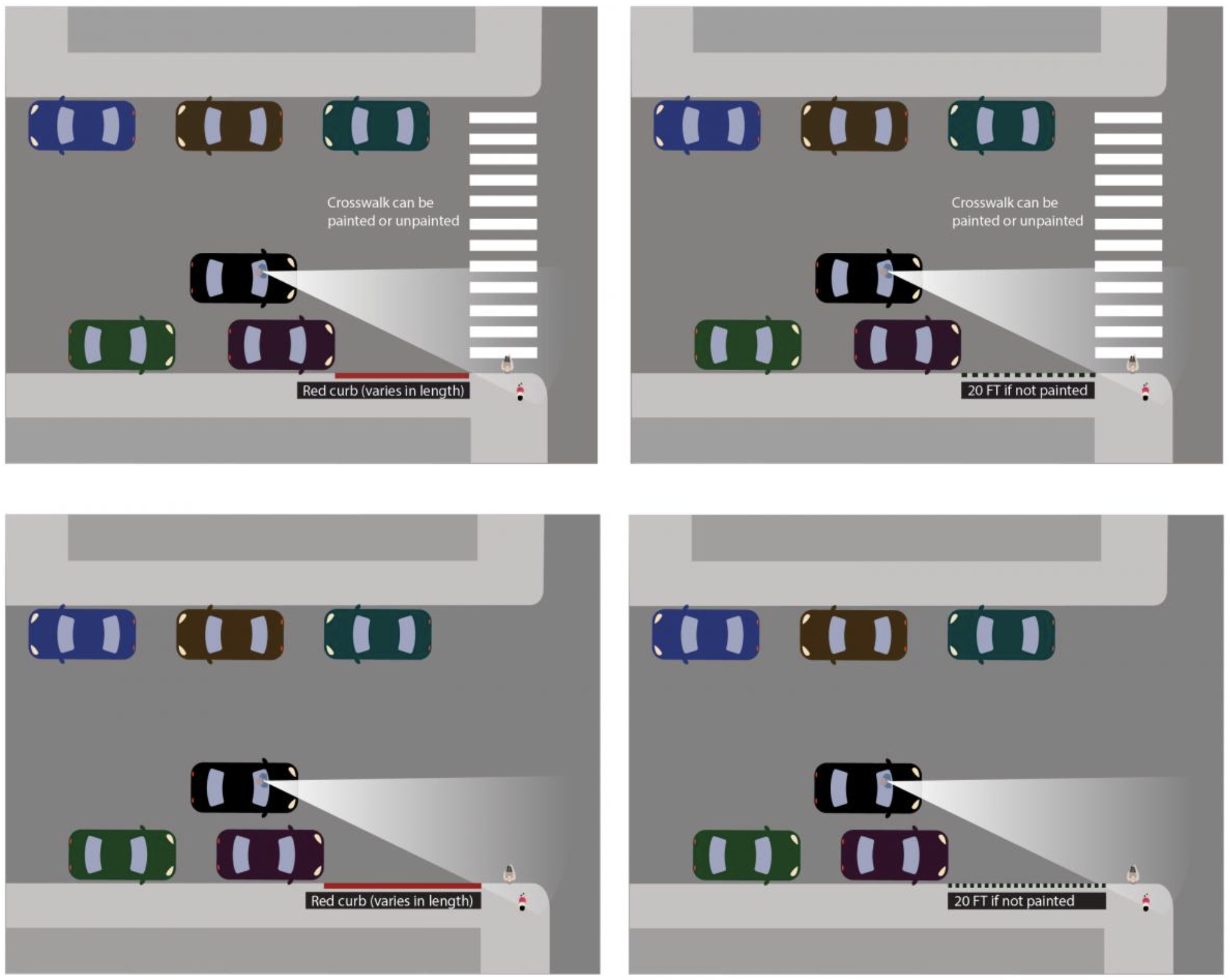
Crucially, the daylighting law only prohibits parking next to a crosswalk on the “approach side” of an intersection. Confused? Imagine you’re driving a car down a regular two-way street. Daylighting would prohibit you from parking in the spot immediately before the crosswalk as you approach the intersection. But the law would not prevent you from parking in a spot directly after that crosswalk as you exit the intersection — because a car parked in such a spot doesn’t impair the ability of people crossing the street there to see a car coming towards them, and vice versa.
If you’re still having trouble picturing the kinds of parking spots that daylighting applies to, imagine yourself as a pedestrian trying to cross a super-busy street, taking your first nervous steps into a crosswalk that doesn’t have a traffic light. Is there a car parked directly on your left that you’re having to peek around to see if any drivers are racing up the street in your direction?
If so, that’s the exact parking spot that daylighting now makes illegal.
So all of these now-illegal parking spots will be removed or clearly marked, right?
No — and this is one of the more contentious aspects of California’s daylighting law.
While some cities have begun to remove parking spots, pull out meters, paint curbs red or otherwise fill daylighted spots, they don’t actually have to do so under the law. Which means it’s up to California drivers to recognize an illegal daylighted spot and stay out of it, even if the spot looks perfectly available, with no red curb.
So a driver can absolutely still get a warning or a citation for parking in a daylighted spot that has no such markings — and that’s what San Francisco had planned to do starting March 1 until “community members and district supervisors shared their concerns about fairness in enforcement,” according to SFMTA.
Now, the agency has announced it’s scrapping these plans and will now only ticket drivers parked in daylighted spots that are painted with red curbs. SFMTA now also plans to “fast-track” the painting of red curbs in daylighted spots around the city, with school zones receiving priority.
“Many have raised concerns about our plans for the state’s daylighting law,” said Julie Kirschbaum, SFMTA’s acting director of transportation. “Daylighting is a crucial tool for street safety, but I want to ensure that we implement it fairly when we roll it out citywide.”
San Francisco’s change of plans notwithstanding, in principle, daylighting “functions a lot like the parking restrictions around a fire hydrant,” said Liza Lutzker, a research data analyst at UC Berkeley’s Safe Transportation Research and Education Center.
“It doesn’t have to be red curbed, but everyone knows you’re not supposed to park within 15 feet of it,”
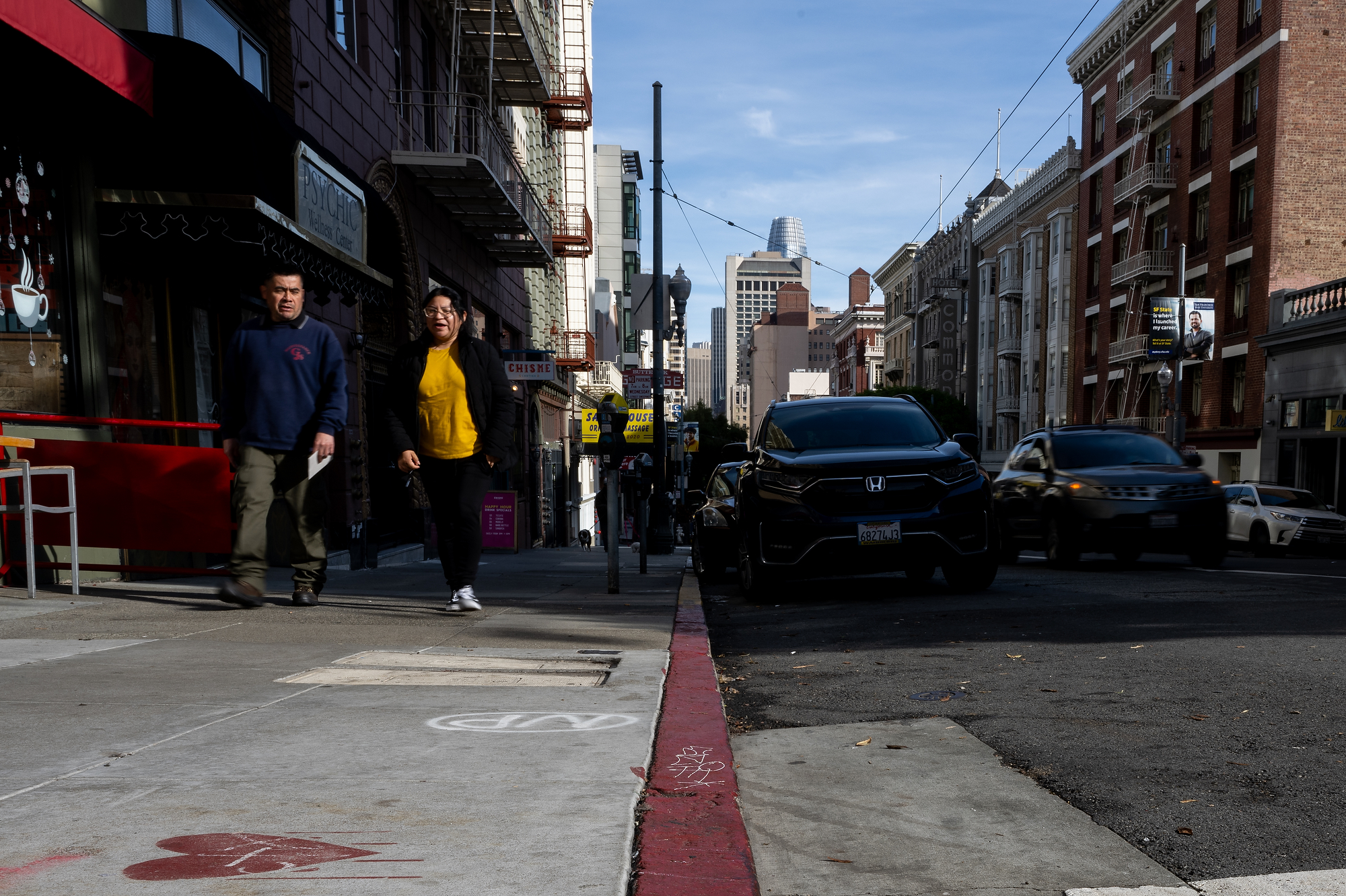
So, how can I avoid getting a ticket for daylighting?
Jump to: How is my city enforcing daylighting with tickets?
Here are some of the things to remember to lower your chances of being cited for parking in a daylighted spot:
Get to know what 20 feet looks like…
If you’re imagining Parking Control Officers patrolling the streets with ways to measure the curbs, it doesn’t sound like that’ll be the reality of daylighting enforcement — at least not in San Francisco. “Parking enforcement will not be out with measuring tape,” Michael Roccaforte, a spokesperson for the San Francisco Municipal Transportation Agency (SFMTA), told KQED in December.
But that means you’ll need a good handle on what 20 feet looks like — or 15 feet, in the case of daylighted spots next to a crosswalk with a curb extension. SFMTA characterizes 20 feet as “about one car length or the length of about one metered space,” — so when you’re picturing that car in your mind, make it a larger SUV rather than a Mini Cooper to be on the safe side. (For scale, a Subaru Outback is almost 16 feet long.)
Daylighting applies on both sides of a one-way street
The space directly after a crosswalk isn’t a daylighted spot, but the space directly before it — as the driver approaches it — is. So, on a one-way street, it will be illegal to park in a spot immediately before a crosswalk on both sides of the street.
